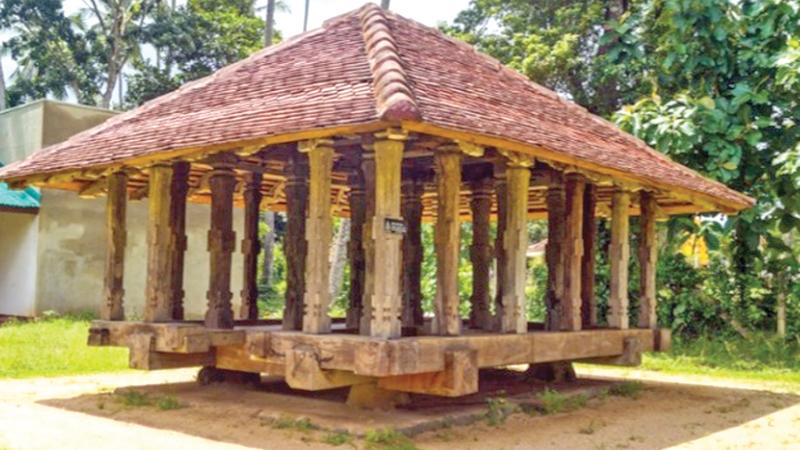
Buddhists are well known for their altruism and philanthropy. Particularly the Buddhists of the past were so altruistic that they were highly concerned even about the fatigue of travellers. That noble feeling of being of some help to others in whatever way possible resulted in them building shelters or ambalams (travellers’ resting houses) or choultries for the use of travellers, pilgrims or traders.
In the Sinhalese encyclopaedia, an ambalam is defined as a kind of hall erected by the side of the road for the relaxation of wayfarers on their way, as rest houses and hotels were very rare in ancient times. An ambalam was a safer place where travellers on foot could relax their weary limbs, prepare meals and spend the night. Those who built an ambalam hardly ever forgot to place a big pitcher of water too called Pinthaliya by the side of the ambalam.
There still exist several, ancient, well-preserved rest houses for travellers or ambalams which have been able to withstand the ferocity of nature. One such ancient ambalam is in the village of Panavitiya in the Kuliyapitiya East Divisional Secretariat Division.
This ambalam is thought to belong to the 18th century A.D. This has been built on a wooden platform built at a height of half a foot from the ground level. The original base which holds the wooden structure of the ambalam is a quadrangular platform filled with stone pebbles and crushed rocks. Wooden pillars are placed on the platform above the ground and the building is built on it. The speciality of the Panavitiya Ambalama is that its ornate wood carvings resemble those at Embekka Devalaya, Lankathilaka and Gadaladeniya temples.
The ambalam is believed to have been built to the wayside of two routes used by the travellers on foot. One route which is said to be a footpath made during the Dambadeniya era is supposed to have originated from the Eastern gates of the Dambadeniya palace and follows Northeast passing by the Panavitiya Ambalama and leads further Northeast towards Yapahuwa. The other more ancient route that could be reached from the ambalam was said to be towards Anuradhapura.
The building is 11 feet and 5 inches in height and the length of the roof is about 18 feet and 3 inches. There are four main timber logs, each of which is 4 feet in diameter and they were connected at seating height over the stone boulders at the base. It is on these four interconnected timber logs that the four wooden pillars stand supporting the roof. Panavitiya Ambalama comprises 28 wooden posts. There are two main entrance pillars, on either side of which 12 pillars arranged in two by six rows parallel to the main pillar run towards the back of the ambalam.
The special significance of the ambalam is that the wooden pillars used are carved for beauty. Among the carvings are human figures, animal figures and various types of elaborate decorations or carvings which also include a procession, a discussion, a drummer, a dancing girl in traditional Kandiyan costume, a couple of deer, a couple of peacocks, a feast, and a wrestling fight. Carvings such as Gajasinghe Katayama, Hansa Puttuwa and flower designs can also be seen.

